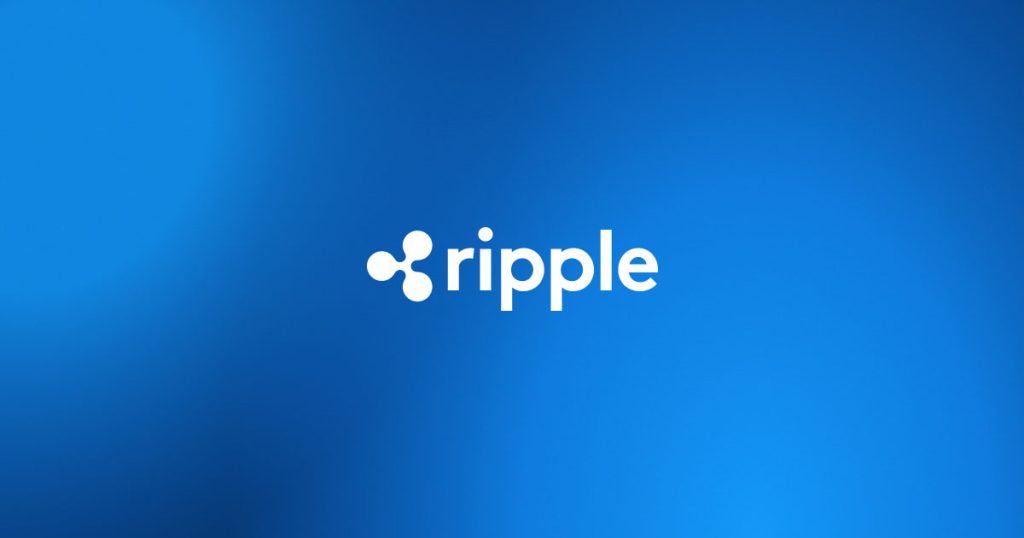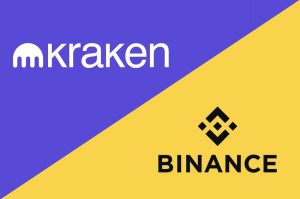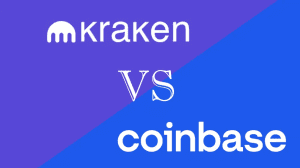What Is Ripple (XRP)? The Full Guide

The world of finance is undergoing a profound transformation through the advent of cryptocurrencies and blockchain technology. Ripple (XRP), a groundbreaking innovation, has emerged as a frontrunner in revolutionizing cross-border transactions and reshaping traditional financial systems.
This comprehensive guide will fully explore Ripple and XRP, their functionalities, and their historical evolution. We’ll also examine their regulatory challenges, advantages, limitations, practical applications, and more. And we’ll cover everything in plain English – no technical jargon.
Ripple (XRP) Guide – The Summary
Our short version covers the main points you need to know about Ripple and XRP.
- Ripple (XRP) is a pioneer in blockchain technology, aiming to revolutionize cross-border payments and reshape traditional finance.
- Ripple’s ecosystem includes XRP, its native cryptocurrency, which serves as a bridge currency for swift exchange between fiat and cryptocurrencies.
- RippleNet, Ripple’s payment network, streamlines cross-border transactions by eliminating intermediaries and reducing settlement times to minutes.
- The history of Ripple started in 2011, leading to the launch of the XRP Ledger and the development of Ripple Labs’ technology for efficient cross-border payments.
- Despite its successes, Ripple faced a significant challenge with a lawsuit from the SEC alleging unregistered securities sales of XRP, impacting its future adoption and recognition.
Ripple (XRP) – Modern Solution to Cross-Border Payments
The archaic processes governing cross-border payments have struggled to keep pace in a world where information flows almost instantly. Traditional systems like the Society for Worldwide Interbank Financial Telecommunication (SWIFT) have long facilitated international transactions. But it all came at a cost: inefficiency, multiple intermediaries, and prolonged settlement times.
Blockchain technology, the underlying foundation of cryptocurrencies like Bitcoin and Ethereum, has emerged as a solution. Ripple, a pioneering company in the blockchain space, developed a technology that aims to revolutionize cross-border payments and remittances. Central to Ripple’s ecosystem is its cryptocurrency called XRP.
Understanding Ripple and XRP
Ripple, founded in 2012, is a technology company based in the United States that seeks to enhance financial processes through blockchain technology. Unlike traditional cryptocurrencies, Ripple tailors to the needs of financial institutions, aiming to streamline cross-border transactions and increase efficiency in the global payment system.
XRP, on the other hand, is Ripple’s native cryptocurrency. It serves as a bridge currency in Ripple’s ecosystem, facilitating the exchange between fiat currencies and cryptocurrencies. Furthermore, XRP aims to enhance liquidity and enable faster, cost-effective cross-border transfers.
Transforming Cross-Border Payments and Remittances
Ripple’s disruptive potential lies in its RippleNet payment network. RippleNet offers a real-time gross settlement system, a currency exchange, and a remittance network. The network eliminates the multiple intermediaries and layers of processing required by traditional systems like SWIFT.
Therefore, it streamlines the transfer process and reduces transaction times to minutes, ensuring transparency throughout.
Moreover, RippleNet comprises various offerings. That includes xCurrent for bank-focused payments, xRapid for liquidity provision through XRP, and xVia, which integrates the previous two services via an application programming interface (API). So under RippleNet, these components offer an end-to-end solution for efficient cross-border transactions.
Ripple (XRP) – Evolution and History
The Ripple (XRP) journey began in 2011 when computer engineers David Schwartz, Jed McCaleb, and Arthur Britto sought to create a sustainable system for value transfer. They launched the XRP Ledger and formed Ripple Labs, later renamed OpenCoin, then Ripple. The company aimed to develop a more efficient alternative to Bitcoin’s technology for cross-border payments.
Jed McCaleb, one of Ripple’s founders, left the company in 2014 to create Stellar, a similar network. Despite this, Ripple continued to develop and refine its technology. Consequently, it unified its offerings (xCurrent, xRapid, and xVia) under the RippleNet umbrella in late 2019.
The Role of XRP in the Ripple Ecosystem
XRP plays a pivotal role in Ripple’s ecosystem. While the Ripple Network supports any currency or asset for transactions, XRP offers additional liquidity and acts as a bridge currency when necessary.
The token’s primary purpose is to facilitate seamless cross-border transactions. Minimal transaction fees and rapid settlement status distinguish it from other cryptocurrencies. The XRP Ledger, maintained through a network of validators, ensures fast confirmations and secure transactions. The network is designed to reach consensus quickly, adding blocks to the ledger and ensuring data immutability.
However, XRP’s status as a cryptocurrency faced challenges when the US Securities and Exchange Commission (SEC) initiated a lawsuit against Ripple in 2020. The SEC alleged that the company sold XRP to investors illegally without proper registration as a security.
SEC vs. Ripple (XRP)
The SEC’s lawsuit against Ripple stems from its allegation that the company and its executives sold XRP as an unregistered security. Immediately, Ripple defended its actions and denied any wrongdoing, saying it would take the case to court.
In July 2023, federal judge Analisa Torres ruled in a summary judgment that XRP offerings were not investment contracts, thus marking it a landmark victory for Ripple. However, she also deemed the initial sale of XRP to violate securities laws.
Nevertheless, XRP supporters – and the whole crypto community – considered it a win. XRP prices soared by over 95%, with other altcoins claiming significant rises, including Stellar.
But on August 17, Judge Torres also granted the SEC the right to appeal following the agency’s request, opening the door for a higher court to overturn her ruling. As a result, XRP and crypto prices tumbled following the news.
The lawsuit’s outcome remains uncertain, impacting Ripple’s future adoption and recognition.
Ripple (XRP) Pros and Cons
Ripple and XRP have garnered attention for their potential to transform cross-border transactions and financial systems. However, like any technology, they come with advantages and disadvantages.
Pros
- Fast settlement: RippleNet’s standout feature is its lightning-fast transaction settlement. Confirmations happen within four to five seconds, a remarkable improvement compared to the days it takes traditional banks for wire transfers or the minutes to hours required by Bitcoin transactions. Hence, speed enhances efficiency in cross-border payments and remittances, providing users with near-instantaneous transaction confirmation.
- Low fees: Completing transactions on the Ripple network is remarkably cost-effective. The transaction cost is just 0.00001 XRP, which translates to a tiny fraction of a penny at current exchange rates. This low fee structure starkly contrasts traditional financial systems and even many other cryptocurrencies. Therefore, it’s an attractive choice for microtransactions and cost-sensitive users.
- Versatile exchange network: Ripple’s utility extends beyond its native cryptocurrency, XRP. While XRP serves as a bridge currency, the Ripple network supports various fiat currencies and cryptocurrencies. This versatility offers users the convenience of transacting with different forms of value, contributing to a seamless and integrated financial ecosystem.
- Institutional adoption: Ripple’s unique advantage lies in its adoption by large financial institutions. Prominent players like Santander and Bank of America utilize the Ripple network for transactions, indicating a level of institutional acceptance uncommon among most cryptocurrencies. This institutional backing suggests higher trust and recognition within the traditional financial sector.
Cons
- Form of centralization: A core principle of cryptocurrencies is decentralization, reducing the control of banks and governments. Ripple, however, departs from this philosophy to some extent due to its default list of validators. While the network operates with a degree of decentralization, this feature has raised concerns within the cryptocurrency community about Ripple’s centralization tendencies.
- Pre-mined XRP supply: XRP’s supply structure has also raised eyebrows. Though much of Ripple’s supply not in circulation is in escrow, introducing substantial quantities at inopportune times could impact XRP’s market value. This centralized control over the supply contrasts with the scarcity-focused approaches of other cryptocurrencies like Bitcoin.
- SEC lawsuit: One of the most significant challenges facing Ripple and XRP is the SEC lawsuit. The agency alleged that Ripple violated securities laws through its initial coin offering and subsequent XRP sales. The case introduces regulatory uncertainties and potential legal ramifications, casting a shadow over XRP’s regulatory status and market prospects.
The Future of Ripple and Its Impact on Finance
Ripple’s potential to disrupt international payments, remittances, and central bank digital currencies (CBDCs) is considerable. The company continues to develop projects for NFTs, smart contracts, and integration with other platforms, positioning itself as a significant player in the evolving financial landscape.
FAQs About Ripple (XRP)
Learn more about Ripple and XRP.
Can I mine XRP?
No, XRP cannot be mined like traditional cryptocurrencies. It operates on a consensus algorithm called the Ripple Protocol Consensus Algorithm (RPCA), which doesn’t involve traditional mining. Validators maintain the network’s integrity.
Is XRP a good investment?
Investing in XRP carries both potential advantages and risks. Its adoption depends on regulatory outcomes and financial institution adoption. Consider the SEC lawsuit and centralization concerns before investing.
How can I buy XRP?
You can purchase XRP on various centralized exchanges like Binance, Bitfinex, Huobi, Kraken, and KuCoin. It’s crucial to have an account with the platform, transfer funds, set up an order, and execute the transaction.
What is the SEC lawsuit against Ripple?
The US SEC alleges that Ripple illegally sold XRP to investors without registering it as a security, leading to legal uncertainties around XRP’s regulatory status.
What is Ripple’s response to the SEC lawsuit?
Ripple has vigorously defended itself against the SEC’s allegations. The company filed a Wells Submission with the SEC and requested the charges’ dismissal. While a federal judge ruled that XRP offerings were not investment contracts, the lawsuit’s outcome is still pending further court proceedings.
XRP (Ripple) Explained – Final Words
Ripple’s innovative approach to cross-border payments and remittances through its XRP cryptocurrency has the potential to reshape the global financial landscape. By offering a faster, cost-effective, and more efficient alternative to traditional payment systems, Ripple aims to bridge the gap between technology and finance.
However, its journey is marked by regulatory challenges and ongoing development, making its future impact uncertain yet promising.
Please note that cryptocurrency investments carry inherent risks, and it is essential to conduct thorough research and seek professional advice before engaging in any financial transactions.





